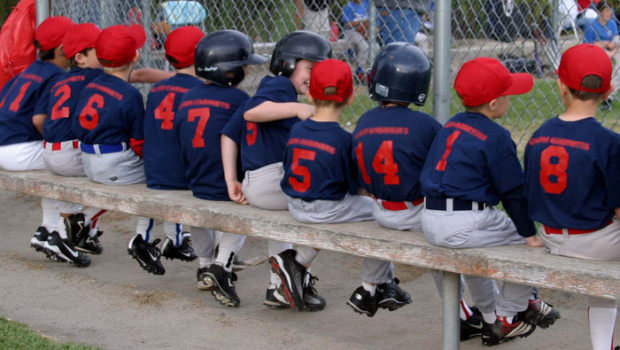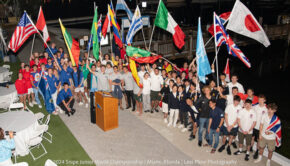Avoid the Little League trap by redefining competition
Published on September 16th, 2014
by Nick Hayes, Sailing magazine
There are competing philosophies at sailing schools. Some teach almost exclusively through racing, while others reject racing altogether. Only a few straddle a racing middle ground. Advocates on either side are entrenched.
Racing-focused schools tend to be led by sailors who see a world in which competition frames everything: career, culture, success, leadership and new ideas. In that way of thinking, a sailing school is a place to make and hone top performers for such a world. Racing happens to be a fun way to learn—until it’s not—and then the losers inevitably leave. Schools like this depend on a numbers game. They need enough young rookies to sign on to be able to survive their own, built-in culture of attrition when the young majority ages and starts to lose. It’s sailing’s equivalent of the human sacrifice.
Schools that avoid racing tend to be led by sailors who see a world in which competition is unnecessarily exclusive and limiting, especially when it is focused on young people. In that way of thinking, a sailing school is a place where everyone is always welcome and nobody is needlessly turned off by a crummy experience. Losing can hurt, so these schools try to prevent people from feeling loss. However, since nearby ad-hoc racing looks interesting, hurt-free schools often lose students when basic skills have been mastered. From the aspiring student’s perspective, it can feel as if the advanced skills only involve racing. These kinds of schools depend on a critical mass of annual donors to stay afloat to counter high transience.
Neither approach is ideal. Competition needn’t kill an interest. Why rule out fun or advanced learning by ruling out the game of racing? Other youth sports can provide some guidance as to what not to do.
My second grade nephew plays in a fast-pitch Little League. Last month the Little League Angels were badly outmatched by the Dodgers, who were bigger and faster in all positions, especially at pitcher, a position that was manned by a kid whose size was closer to an NFL linebacker’s than my nephew’s. The giant pitcher mowed down the Angels, while the Angels rotated pitchers every inning to prevent against shoulder and ego injuries. The big Dodgers pitcher was still in the game with a 14-1 lead.
The Angels were embarrassed and overcompensated. After swinging like a superhero in the on-deck circle, a kid would strike out and slink back to weep alone in the dugout. Angel parents took to cheering for dumb mistakes lacking anything else. Dodger coaches strutted, anticipating an icy sport drink dousing.
No coach or umpire stepped in. Parents seemed to want to, but didn’t. Most of the kids on both sides wanted it to end, even the Dodgers’ star pitcher. This wasn’t a lesson in resilience or honor. Instead, almost everyone took a poor lesson from it. Pile on. Hate the game. Look away. Quit.
Perhaps the problem is how we adults define competition… read on
Editor’s note: I worry that Yacht Club junior sailing programs are deemed successful by tracking race results and not sailor retention. For every 8-year old that takes their first beginner class, does your club track whether they remain in sailing five years later? Or is your club (and parents) focusing more on a curriculum for the better kids to seek championship results? Comments welcome.









 We’ll keep your information safe.
We’ll keep your information safe.